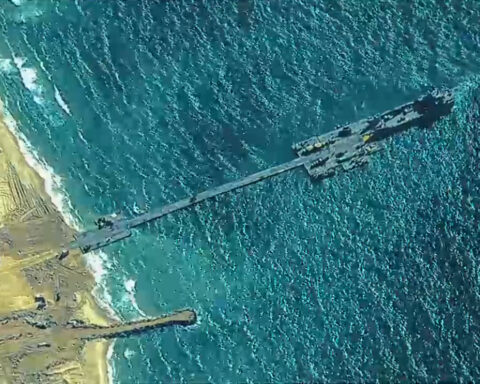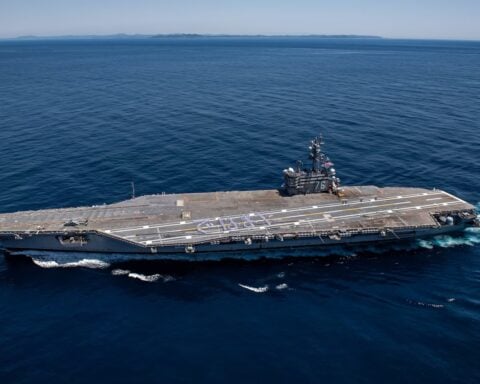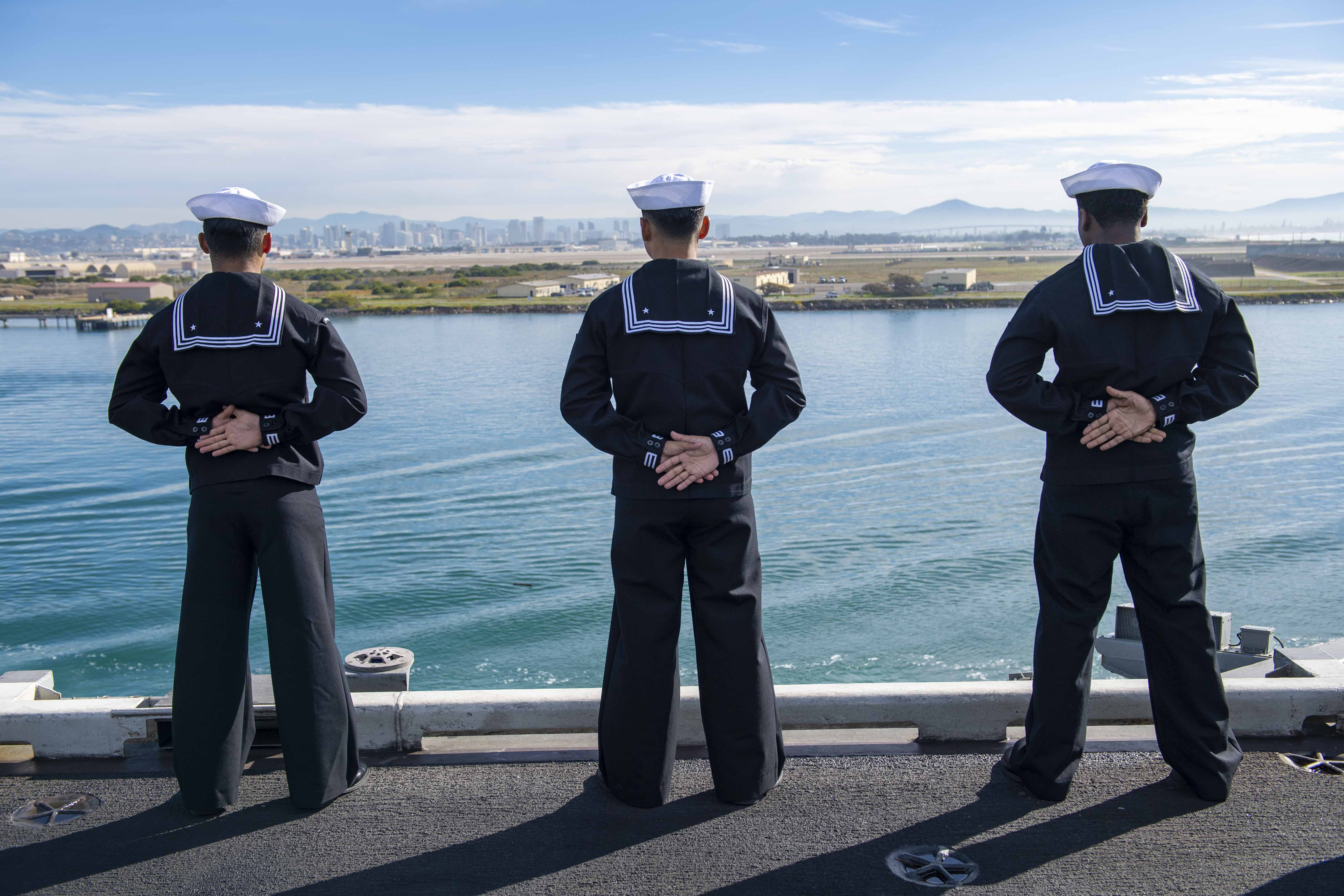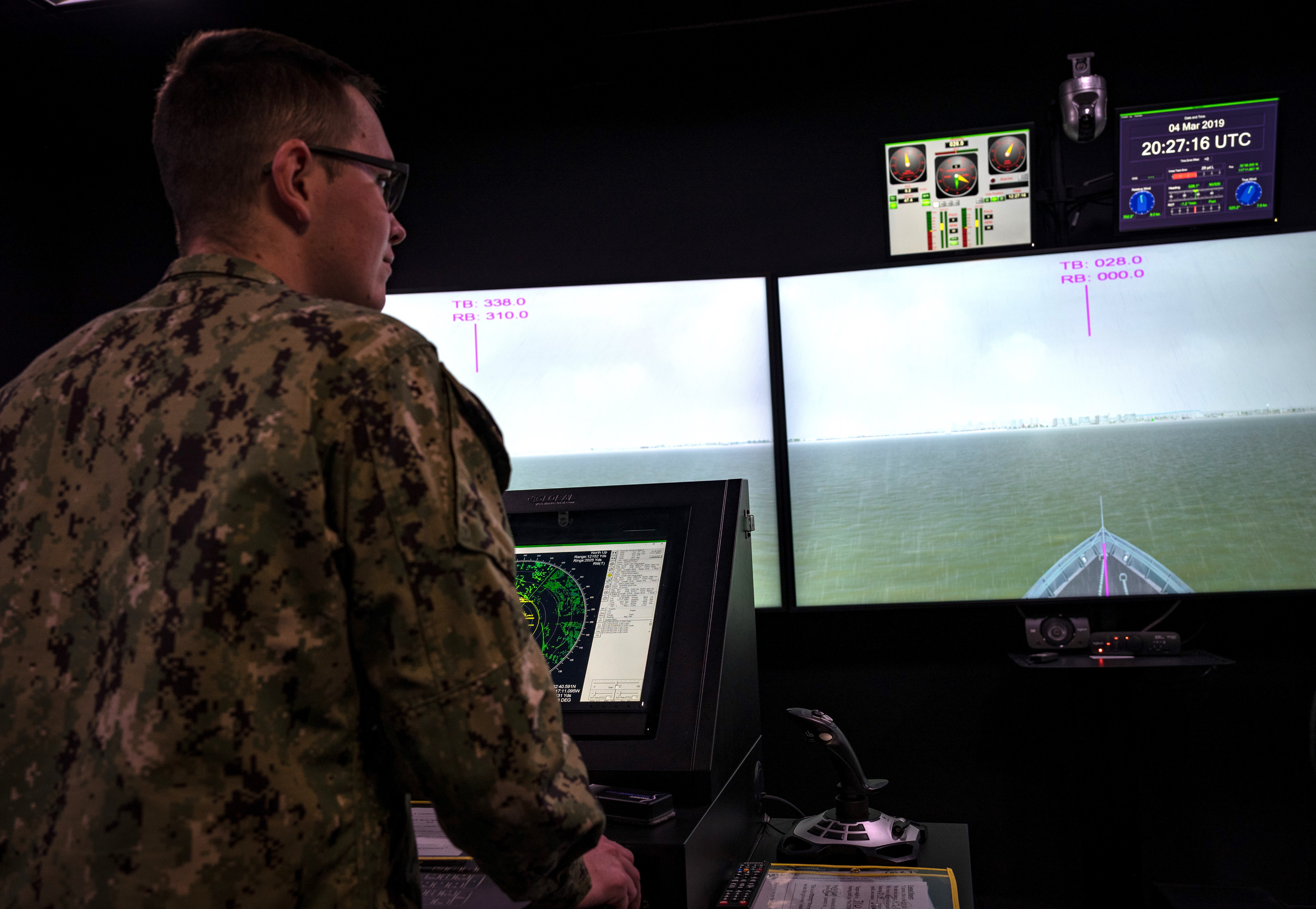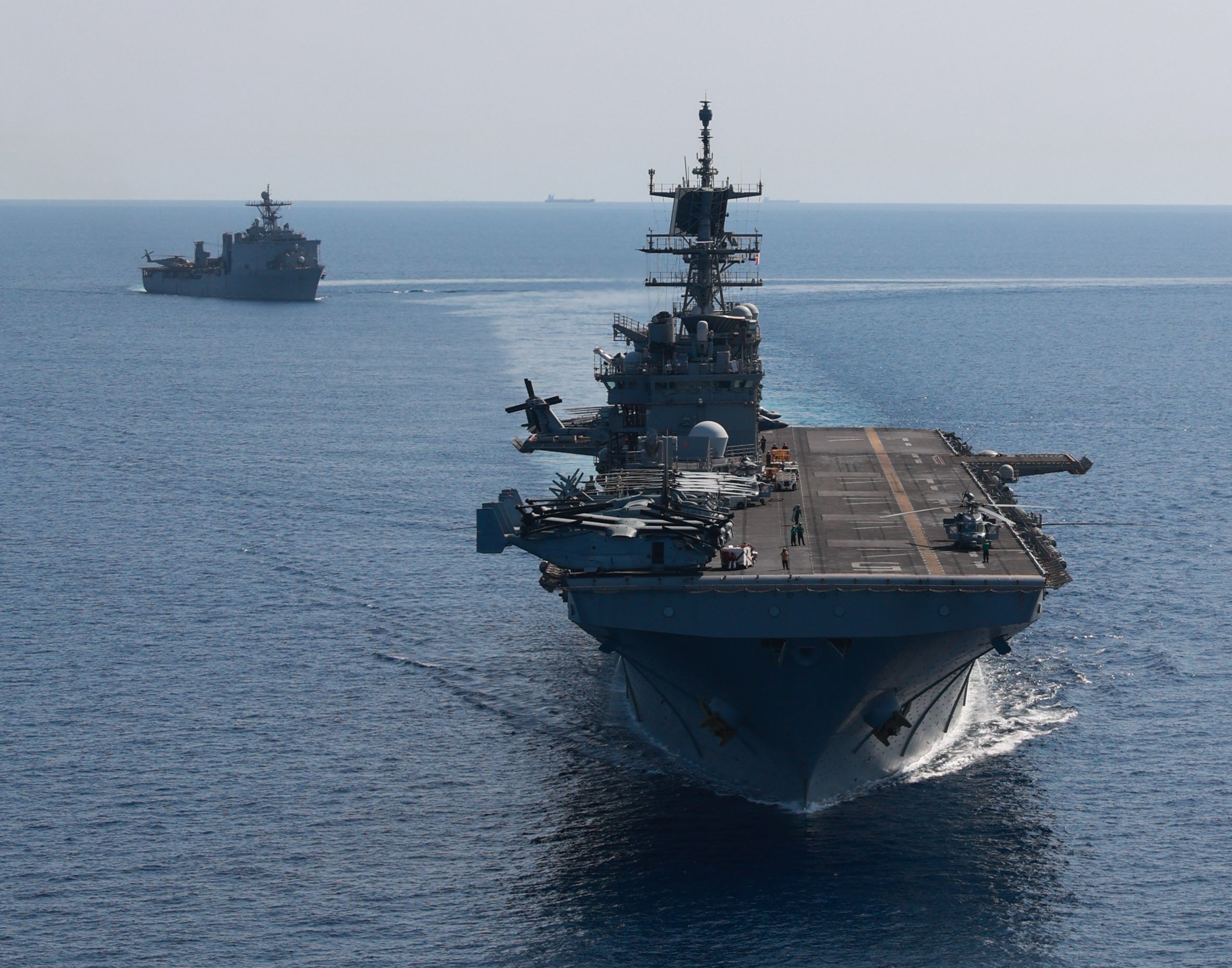
THE PENTAGON – USS Bataan (LHD-5) and USS Carter Hall (LSD-50) are expected to remain in the Red Sea for an extended period as part of the U.S. naval buildup in the Middle East, two defense officials confirmed to USNI News Monday.
The two ships were previously going to join USS Mesa Verde (LPD-19), the other ship assigned to the Bataan Amphibious Ready Group. Mesa Verde is currently in the Eastern Mediterranean.
Embarked on the three ships is the North Carolina-based 26th Marine Expeditionary Unit . The MEU includes the command element; the aviation combat element, Marine Medium Tiltrotor Squadron, 162 (Reinforced); the ground combat element, Battalion Landing Team 1/6; and the logistics combat element, Combat Logistics Battalion 22. The Marines aboard are trained to evacuate civilians in conflict zones. USNI News visited the unit in April during a non-combatant evacuation exercise in North Carolina.
Defense officials confirmed that besides Bataan and Carter Hall, at least three guided-missile destroyers are also in the Red Sea. USNI News understands that USS Roosevelt (DDG-80), USS Thomas Hudner (DDG-116) and USS Carney (DDG-64) are all in the Red Sea, as of Monday. While Thomas Hudner is assigned to the Gerald R. Ford Carrier Strike Group, the destroyer has been operating in the Middle East while USS Gerald R. Ford (CVN-78) and its escorts have been operating in the Mediterranean. USS Dwight D. Eisenhower (CVN-69) and its escorts entered the Mediterranean on Saturday following the start of their deployment earlier this month.
Also in the Eastern Mediterranean is the U.S. 6th Fleet command ship USS Mount Whitney (LCC-20). Secretary of Defense Lloyd Austin ordered the extension of the Ford CSG earlier this month and Navy officials don’t know when the strike group might start its return to the East Coast.
U.S. warships are spread out between European and Central Command as part of the United States’ response to the ongoing war between Israel and Hamas, as well as a recent uptick in attacks on U.S. forces in the Middle East.
On Oct. 19, Carney shot down four land-attack missiles and 15 drones launched by Houthis in Yemen.
As of Monday, there had now been 23 attacks against U.S. forces, with 14 in Iraq and nine in Syria, Deputy Pentagon Press Secretary Sabrina Singh told reporters.
While Singh said there had been an increase in attacks against U.S. forces in the area, she could not say how much of an increase. The Department of Defense is using a conservative and deliberate approach when counting attacks on U.S. forces, she said.
On Thursday, the U.S. attacked two Islamic Revolutionary Guard Corps sites, where it believed weapons were being produced, the Department of Defense announced.
In addition to the U.S. forces, the French and U.K. have sent warships. French amphibious warship Tonnerre (L9014) will join two guided-missile frigates in the region while the Royal Navy has dispatched the Bay-class landing ship dock RFA Lyme Bay (L3007) and the auxiliary ship RFA Argus (A135).


